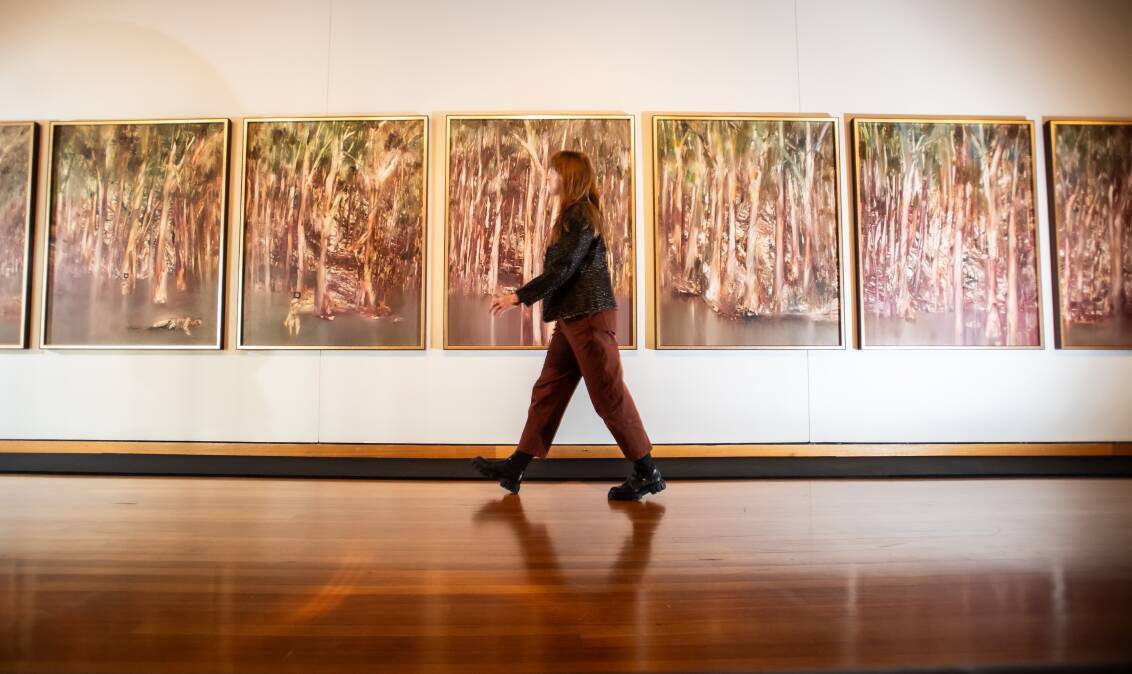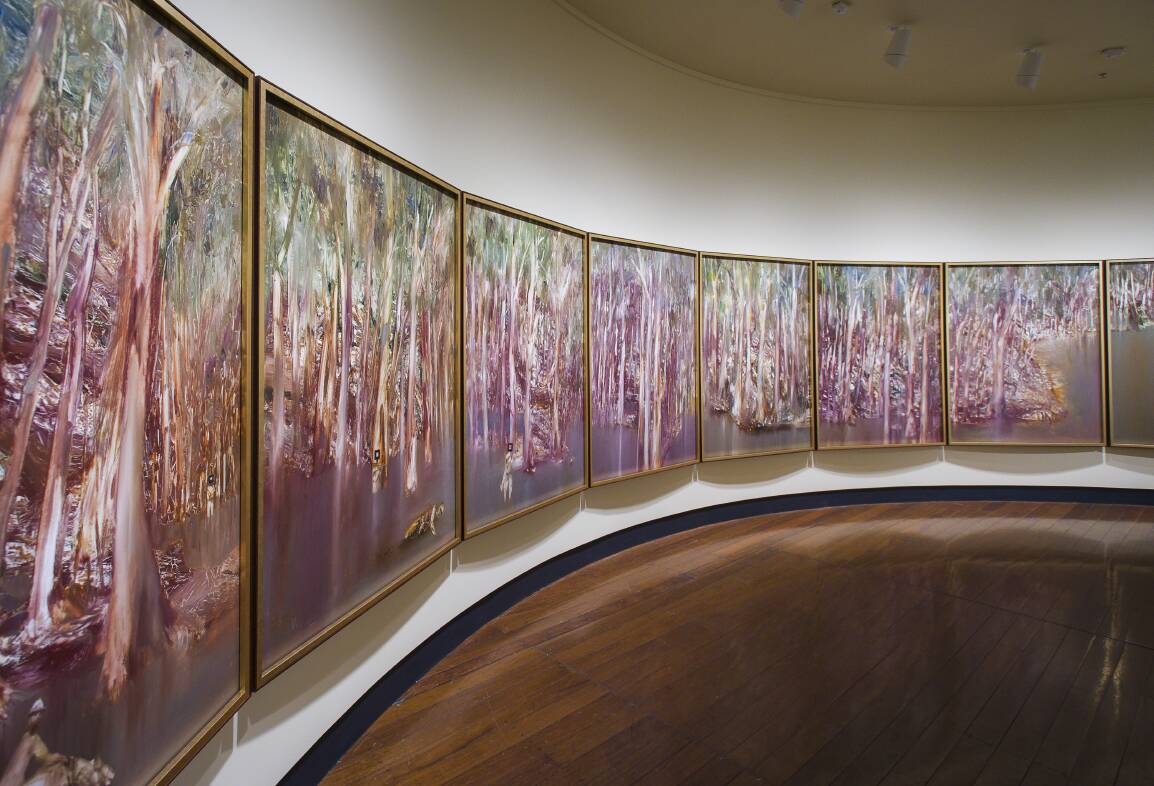Sidney Nolan was living far, far away when he set out to paint the northern Victorian river where he spent his childhood.
The renowned artist created one of his greatest masterpieces, Riverbend I, a nine-panel mural painted over three weeks when he was living in London, at the end of 1964 and beginning of 1965.
Painted two decades after he had begun his long-running Ned Kelly series, it includes part of the infamous shootout at Stringybark Creek in 1878.
But the work is so large - 11 metres long and filling a whole room - the figures are dwarfed by the landscape of towering rivergums and water.
Intended to be immersive, Riverbend was until recently on permanent display in a purpose-built curved room at the Australian National University's Drill Hall Gallery.

With the gallery now in the process of updating its climate control system to align with the ANU's Below Carbon Zero strategy, Riverbend I is, for a limited time, hanging at Canberra Museum and Gallery alongside another, earlier collection of his works.
Curator Virginia Rigney said this was a stellar opportunity for Nolan enthusiasts to see these works side by side in an immersive space.
"I think it's a really wonderful opportunity for people to come and see how somebody evolves," Ms Rigney said.
Like many Nolan works, Riverbend is both beautiful and disturbing; standing in a room surrounded by it can be strangely claustrophobic. The trees fill the canvas, with no horizon and no shade, and no way of knowing what's happening among the trees.
In 1965, Nolan was the ANU's first Creative Arts Fellow, a program that was the first of its kind for an Australian university, initiated by then-pro-chancellor H.C. "Nugget" Coombs, and designed to extend the university's reach beyond research and teaching to the creative arts.
He used Riverbend in his exhibit at the end of the fellowship, and the university quickly acquired the work with the help of a consortium of corporate donations.

A decade later, Nolan bequeathed 24 of his most important earlier works to the Commonwealth, and these are now part of CMAG's permanent collection.
Ms Rigney said Nolan had created Riverbend in a kind of feverish three-week burst, after creating the sets and costumes for two major ballets.
Back in Australia, his father was also gravely ill, and Riverbend I was a kind of tribute to him. His father before being able to see the work displayed at David Jones in Sydney later that year.
Since the university bought the work, it has hung in various places around the campus, and many former students remember seeing it in the Chifley Library and in the tearoom of the Coombs building.
In fact, Nolan painted two versions of Riverbend in the same period. Riverbend II was bought by Rupert Murdoch at a Christie's sale in London in 1993 for more than $1 million and, at one stage, it hung in the New York boardroom of Murdoch's News International headquarters.
Until July, you can experience an almost full-body immersion into Nolan's dreamscape of myth and memory; the artist himself spoke many years later of how important it was to create something lasting when so many people from his life were gone.
"I suppose it's marked me, and all the things that I do in painting now, it all goes back to that time," he said.
"My mother's gone, my father's gone, and all the rest of them of them are gone. But the river's still here and my paintings are still here."







